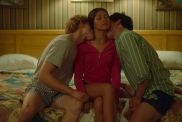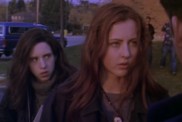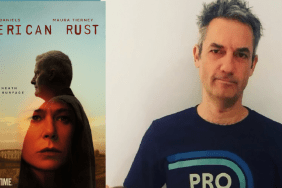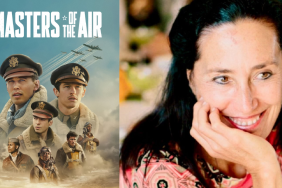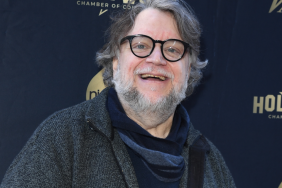
Guillermo del Toro is an incredible guy. At this point, Ive been on my fair share of sets and I have never seen any director have such a thorough understanding of every little detail about the production, be so passionate about all those details and then be so thrilled to share every single one of them with a group of visiting journalists. Usually, youre lucky to get 30 minutes with a director. Del Toro, however, would have stayed with us the entire day if he could, and that made my trip to the Crimson Peak set a particularly remarkable one.
The film stars Mia Wasikowska as Edith, a young woman who crosses paths with two siblings from England, Lady Lucille Sharpe and Sir Thomas Sharpe (Jessica Chastain and Tom Hiddleston). Charlie Hunnams Dr. Alan McMichael has had his eye on Edith for quite some time, so when Edith heads out of town with Thomas, hes not too happy about it. However, Dr. McMichaels broken heart is the least of Ediths worries because soon after arriving at the Sharpes house, she comes to realize somethings not quite right with the place.
Back in March, we got the opportunity to check out Legendarys Crimson Peak set at Pinewood Toronto Studios, and while we cant give you all the details from our visit just yet, we are able to share what we talked about with Del Toro while hanging out in his dream home, the fully realized, three-story Sharpe house he built on the Pinewood soundstage. Keep an eye out for the bulk of our set visit report including interviews with Chastain, Hiddleston and Hunnam a bit closer to the films October 16, 2015 release via Universal, but you can check out the highlights from our time with Del Toro right now below.
Crimson Peak was originally intended to be a much smaller movie. This thing was written in 06. When we wrote it in 06, there was an intention of doing it as a smaller movie on a found building. And I really wanted for the house to be a character. I said, I’ll produce that one, but if I direct it, I need to build a house. The idea of the house was in the script, but the evolution of the design was really, six months into it, and it’s very different from what the screenplay described.
Its part love story, part ghost story. The reason I was attracted to this thing is that, when one story ends, the other one flows, you know? Like, you have, I think, a really good love story and when that ebbs, the ghost story kicks in, and then the complete psycho story picks up, you know? So my hope is, I dont want to do a straight gothic romance. I want to do it hardcore, which is different. But I dont want to do it exactly the way it has been done. I want to bring different stuff.
This shooting schedule is tight! It’s 68 days. Pac Rim was 100. Hellboy 1 was 135. I went into training mode on The Strain, shooting 76, 78 minutes in 20 days. So I came out of there saying, 68 days? Fantastic!
This budget is tight! In order for the budget to look bigger, that means it feels tighter. It feels smaller in order to look bigger because we are literally saying, We cant break this bannister twice because we dont have two bannisters. [Laughs] Or, for example, I had six gravestones made for three cemetery scenes and what I did is, if the tombstone is a square, I did one paint job on this side and another one on the other so I can turn it around and reuse it.
Del Toro had to swap financial freedom for creative freedom. Well, you know, once you say this is an R, I want it to be an R, or shoot it like an R, you know? If by some miracle of miracles we get something else, god bless, but to say I want to shoot it with the freedom, then the studio comes back and says, You have to make it for a budget and your deal is not your deal. You’re going to have to take a cut. And you go, Fine. Not a problem. To get all the freedom and all the money is A, rare, and B, not desirable. I think that it leads to madness I think part of making movies is dealing with restrictions of freedom or restrictions of budget, and I’d rather deal with restrictions of budget. You know what Im saying? It’s better to feel free within any budget.
Shooting in Toronto was vital. It was a priority for del Toro to keep his team intact. I think that I really love the idea of people I know. Like, the crew, I know perfectly. I mean, a lot of the crew is crew that I had on Mimic. Dan Laustsen, the cinematographer, is my cinematographer from Mimic. Ive known Gilles [Corbeil], the steadicam man, the first camera operator since 1996, and weve done now four projects together. And, you know, there’s a shorthand and very, very light sense of spirit on the set. When you go to a new country, which I’ve done a lot, you need to restart all that. For example, all the painters, the plasterers, the set builders, to make them know that you notice what they do, to make them take pride in that, or the costume designer, the seamstresses, some of which were with us on Pac Rim, its to restart all that. And I think its comfortable for me to say, I can make the budget look much bigger in a place where I know the crew and I can stimulate them into knowing, not feeling, but knowing that they are important, you know? So it was important for me to be in Toronto.
